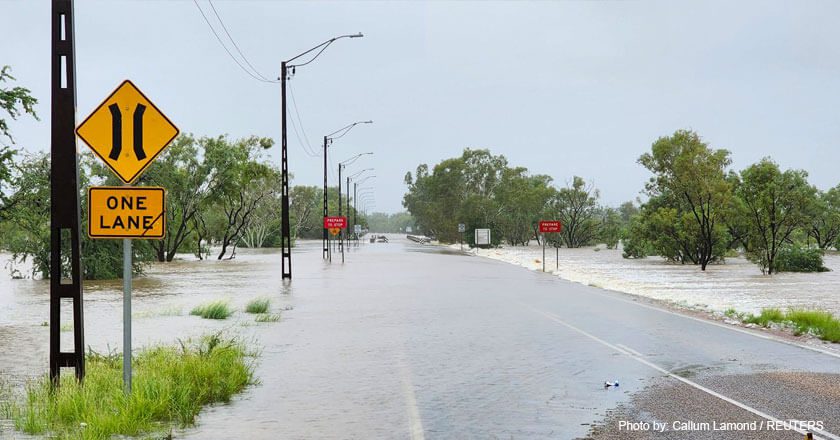3rd Quarter Asia Weather Recap (2021) – How Has Asia’s Condition Been?
September 22, 2021 | Created by: Andreas Klippe | Comments

Since the start of 2021, natural disasters have struck Asia, affecting thousands of people through damages and casualties. This was detailed in the weather recapitulation of the 1st and 2nd quarter, and will also be expounded in this 3rd quarter Asia weather recap.
3rd Quarter Weather Recap
July 2021

1 — PAKISTAN
In line with the National Disaster Management Authority (NDMA) in Pakistan, as of September 9 more than 160 people have passed away in rain-related disturbances since July 1 and the onset of the wet monsoon of this year. This total comprises 8 fatalities in Sindh Province, 24 in Balochistan, 47 in Punjab Province, and more than 60 in Khyber Pakhtunkhwa.
August 2021

2 — TURKEY
Since August 10, heavy rainfall has been affecting the western Black Sea region in Turkey, particularly Bartin, Kastamonu, Sinop, and Karabuk Provinces. It has caused floods and landslides that have resulted in damages and casualties. As of August 18, the death toll was 77, comprising 62 in Kastamonu, 14 in Sinop, and 1 in Bartın.
3 — JAPAN
On August 14, heavy rain continued in wide areas of Japan. Hiroshima, Fukuoka, Saga and Nagasaki prefectures have registered record downpours due to the issuance of emergency warnings by Japan Meteorological Agency. Local authorities issued the highest level of alert to around 1.42 million people, and about 650,000 households in the four prefectures.
4 — MALAYSIA
On August 14, strong flash floods and landslides swept down the steep hillsides of Gunung Jerai in the Yan District of Kedah State in Malaysia. In consequence, at least 4 people lost their lives and 2 are still missing.
5 — MYANMAR
A landslide buried 4 homes in Mogok Township in the Mandalay Region of Myanmar on August 24. Under the collapsed houses, the said disaster buried 14 people. Officials said 11 bodies had been found as of August 26. Three survived but were injured. Local observers said that the recent downpour caused the landslide.
6 — NEPAL
September 2021

7 — PHILIPPINES
As of September 11, tropical cyclone Jolina (international name: Conson) affected 62,022 families or 240,844 persons in Regions NCR, III, CALABARZON, MIMAROPA, V, VI, and VIII. Then, tropical cyclone Kiko (international name: Chanthu) affected 2,942 families or 10,628 people in Regions I, II, and CAR as of September 14.
There’s Still Time to Take Action
Based on the 3rd Quarter Asia weather recap, torrential rainfall that leads to floods or landslides has been the most frequent natural disaster. Only one quarter remains before the year ends. However, Asians can be on the verge of facing tropical cyclones that bring damaging downpours and floods.
As a matter of fact, tropical cyclones Yolanda (international name: Haiyan) and Ulysses (international name: Vamco) both hit the Philippines in November—the former in 2013 and the latter in 2020.
It is well-known that Yolanda is one of the most powerful tropical cyclones of all time. Why? Because it affected 14 million people across 44 provinces and caused the death of 6,000 people. The overall cost of damage it caused was at $5.8 billion. Ulysses, on the other hand, was the deadliest tropical cyclone to hit the country in 2020, as it affected 879,000 people (8 regions) and killed 12. How horrifying both were!
Again, Yolanda and Ulysses took place in November, and November is just a breath away!
Only one quarter remains before the year ends, but we can be sure that Asians will be faced with tropical cyclones that bring damaging downpours and floods.
Given that the effects of torrential rainfall and flooding brought by tropical cyclones can put lives at risk, we can’t afford to waste this very moment not doing anything to prepare ourselves for what may happen.
There’s time and there are possible solutions — the German climate-change-addressing technologies!
They are made of lightweight marine-grade aluminum, hot-dipped galvanized steel, or stainless steel. These flood protection barriers can resist extreme weather conditions and can last for up to 100 years.
German Climate-Change-Addressing Technologies
Below are your choices of flood protection that can help you address climate change-induced flooding.


We cannot stop flooding, but we can reduce the risk of it! Floodwater may be powerful, but there is a long-lasting, cost-effective technology that can block it!
To have a sneak peek of this flood control technology, watch this video of the Top 14 RS Flood Barriers by clicking the “WATCH THE VIDEO” button below.
If you want to know more details about RS technology and services, have a conversation with a Flood Expert by clicking the “BOOK A MEETING FOR FREE” button.






